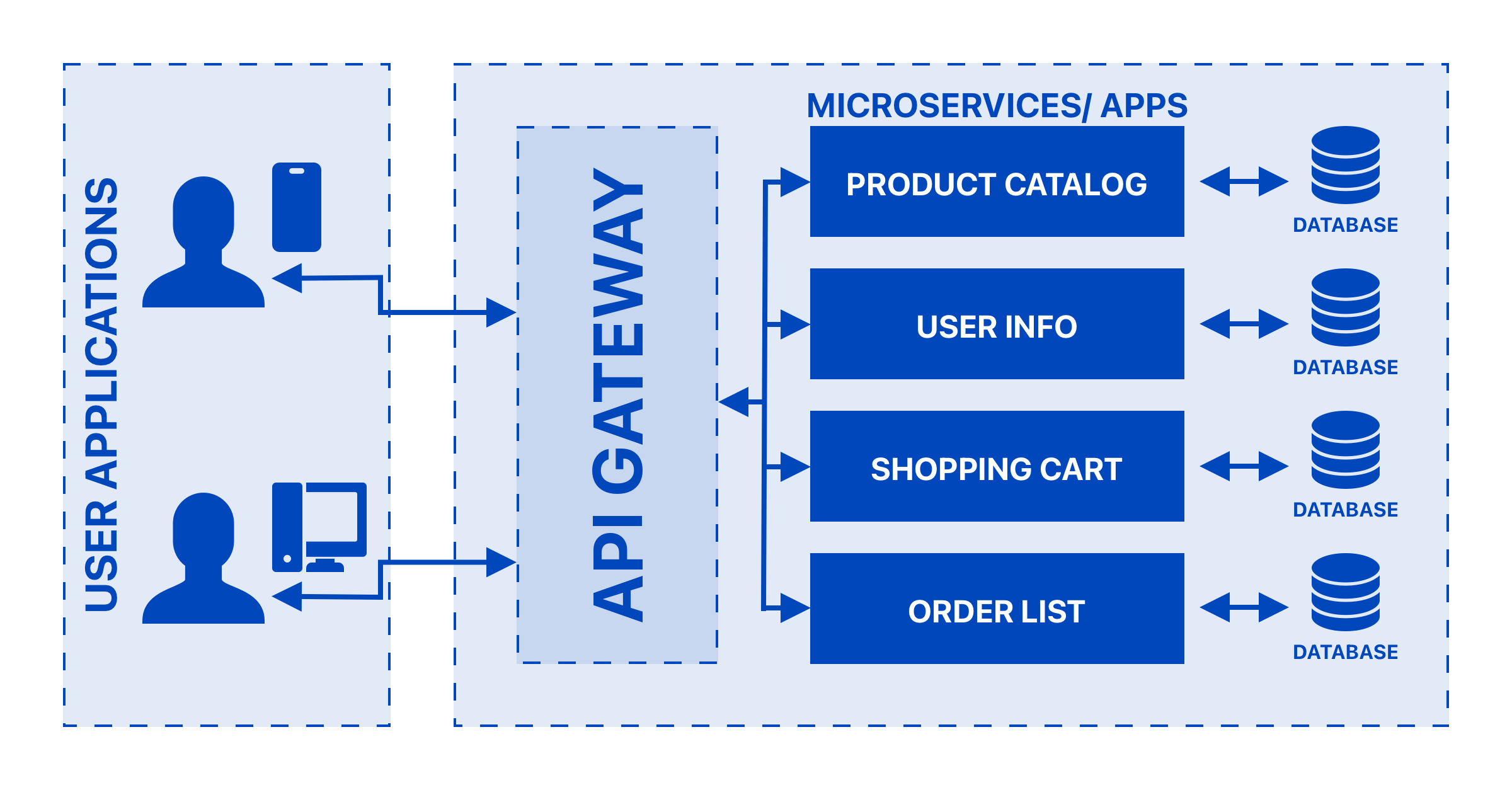In the world of modern software development, APIs (Application Programming Interfaces) play a central role in enabling communication between different places. As the complexity and number of APIs in use continue to grow, managing and securing them becomes a challenge. This is where an API gateway can be very useful!
What is an API Gateway?
An API gateway is a centralized service that acts as an intermediary between clients (such as mobile apps, websites, or other applications) and backend services. It provides a single entry point for all incoming requests and handles tasks such as request routing, authentication, rate limiting, protocol translation, and response caching. Essentially, it acts as a gatekeeper, controlling access to your APIs and facilitating efficient communication between clients and services.
Imagine you have a toy store with lots of toys inside. Now, you have a friend who wants to buy a toy from your store. Instead of letting your friend directly go inside and pick a toy, you decide to create a special window called an "API Gateway."

The API Gateway is like a magical window between your friend and the toy store. Your friend can come to the window and tell the person sitting there what toy they want. The person at the window then goes inside the store, finds the toy, and brings it back to the window for your friend to take.
The API Gateway works in a similar way. It's a special server that sits between different applications or services, just like the person at the window. When one application wants to talk to another application, it goes through the API Gateway.
The API Gateway listens to what the applications need, and then it communicates with the appropriate application or service to get the information or perform the requested action. It makes sure that the communication is smooth and organized, just like the person at the window who keeps everything in order.
So, the API Gateway is like a helpful window that makes it easier for different applications to talk to each other and get the things they need, without having to directly interact with each other.
7 Reasons for Using an API Gateway
Enhanced Security
Enhanced Security: API gateways serve as a security layer by shielding your internal services from direct exposure to the outside world. They enable authentication and authorization mechanisms, such as API keys, tokens, or OAuth, to ensure that only authorized clients can access your APIs. Additionally, an API gateway can provide protection against common security threats, such as DDoS attacks, by implementing rate limiting and request validation mechanisms.

Simplified API Management
Simplified API Management: With multiple APIs to manage, an API gateway simplifies the process by consolidating them into a single interface. It allows you to set up, configure, and monitor your APIs in one place, saving time and effort. You can also enforce consistent policies across all your APIs, such as logging, analytics, and error handling, from a centralized location.

Protocol Translation and Aggregation
Protocol Translation and Aggregation: An API gateway can handle protocol translations, enabling clients to communicate with your backend services using different protocols. For example, it can receive requests in RESTful HTTP and convert them into SOAP requests for legacy systems. Additionally, an API gateway can aggregate multiple API calls into a single request, reducing network latency and improving overall performance.

Load Balancing and Scalability
Load Balancing and Scalability: As your application grows, handling incoming traffic efficiently becomes crucial. API gateways can distribute requests across multiple backend instances using load balancing techniques. This ensures optimal resource utilization and improves the scalability and availability of your services.

Caching and Performance Optimization
Caching and Performance Optimization: An API gateway can implement caching mechanisms to store frequently accessed responses. By serving cached responses instead of forwarding requests to backend services, you can significantly reduce response times and improve overall performance. This becomes especially useful when dealing with APIs that have high read-to-write ratios.

Analytics and Monitoring
Analytics and Monitoring: Understanding how your APIs are performing and being utilized is vital for making informed decisions. API gateways often provide analytics and monitoring capabilities, allowing you to collect data on request/response times, error rates, traffic patterns, and more. These insights help in identifying bottlenecks, optimizing performance, and planning for future improvements.

Cross-Cutting Concerns
Cross-Cutting Concerns: An API gateway enables you to implement cross-cutting concerns such as logging, request/response transformation, and payload validation in a centralized manner. This eliminates the need to replicate these concerns across multiple services, reducing code duplication and promoting a more maintainable architecture.

An API gateway is an essential component in modern software architecture. It provides a centralized, secure, and efficient way to manage and control communication between clients and backend services. By acting as a gatekeeper, the API gateway ensures enhanced security, simplified management, protocol translation, load balancing, caching, analytics, and more. With these capabilities, organizations can streamline their API infrastructure, improve performance, and make informed decisions based on valuable insights. So, whether you're building a small-scale application or a large-scale distributed system, incorporating an API gateway can greatly enhance the reliability, scalability, and security of your APIs, ultimately leading to a better experience for your users and developers alike.






